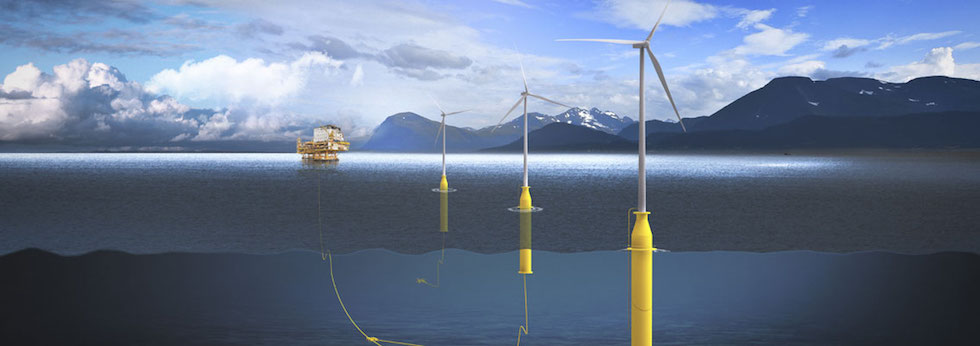
In enhanced oil recovery, water is pumped into a reservoir to increase the pressure, stimulating production and helping to extract more oil from the well.
In a project known as WIN WIN, or Wind-powered Water Injection, researchers led by the classification society DNV-GL have been investigating the idea of using a floating wind turbine to generate the electricity needed to power the water injection system, according to project manager Johan Slätte.
“There is a big focus in the oil and gas industry at the moment on identifying means of reducing the environmental footprint,” he said. “There is also a drive to give oil and gas operators a means of establishing water injection facilities further from the host platform.”
By using floating wind as the power source, operators could locate offshore water injection systems where they are most needed, instead of being governed by their distance from the host platform, Slätte said.
The project team have spent the past year developing and evaluating the concept, which consists of a stand-alone system including pumps and basic water treatment, and assessing its technical and commercial feasibility.
They have concluded the concept is not only technically feasible, but capable of competing on costs with conventional water injection systems, he said.
As a result of this assessment the team, which in the first phase of the project also included ExxonMobil, Nexen Petroleum UK, Statoil and the UK’s Offshore Renewable Energy Catapult amongst others, concluded that wind power could be used to power offshore water injection.
In the second stage of the project, which will involve DNV-GL, ExxonMobil, ENI Norge and the Norwegian Research Council, and is expected to last for up to two years, the team will now move on to refine and test the electrical systems used in the concept.
This will include physical testing of the electrical systems at DNV-GL’s laboratories at Arnhem, in the Netherlands, to monitor how they perform over time with a variable power input.
“Over the next two years we hope to validate some of the questions we have, and do physical testing of the electrical systems, to ensure that it works as we anticipate,” said Slätte.
If the tests are successful, the team hopes to move onto a pilot project with a full-scale prototype by 2020.
“We see this as an opportunity to bring in a new technology offering a means to extend the lifetime of offshore oil fields, without having to undertake a major conversion of existing platform facilities,” said Slätte.




Red Bull makes hydrogen fuel cell play with AVL
Formula 1 is an anachronistic anomaly where its only cutting edge is in engine development. The rules prohibit any real innovation and there would be...